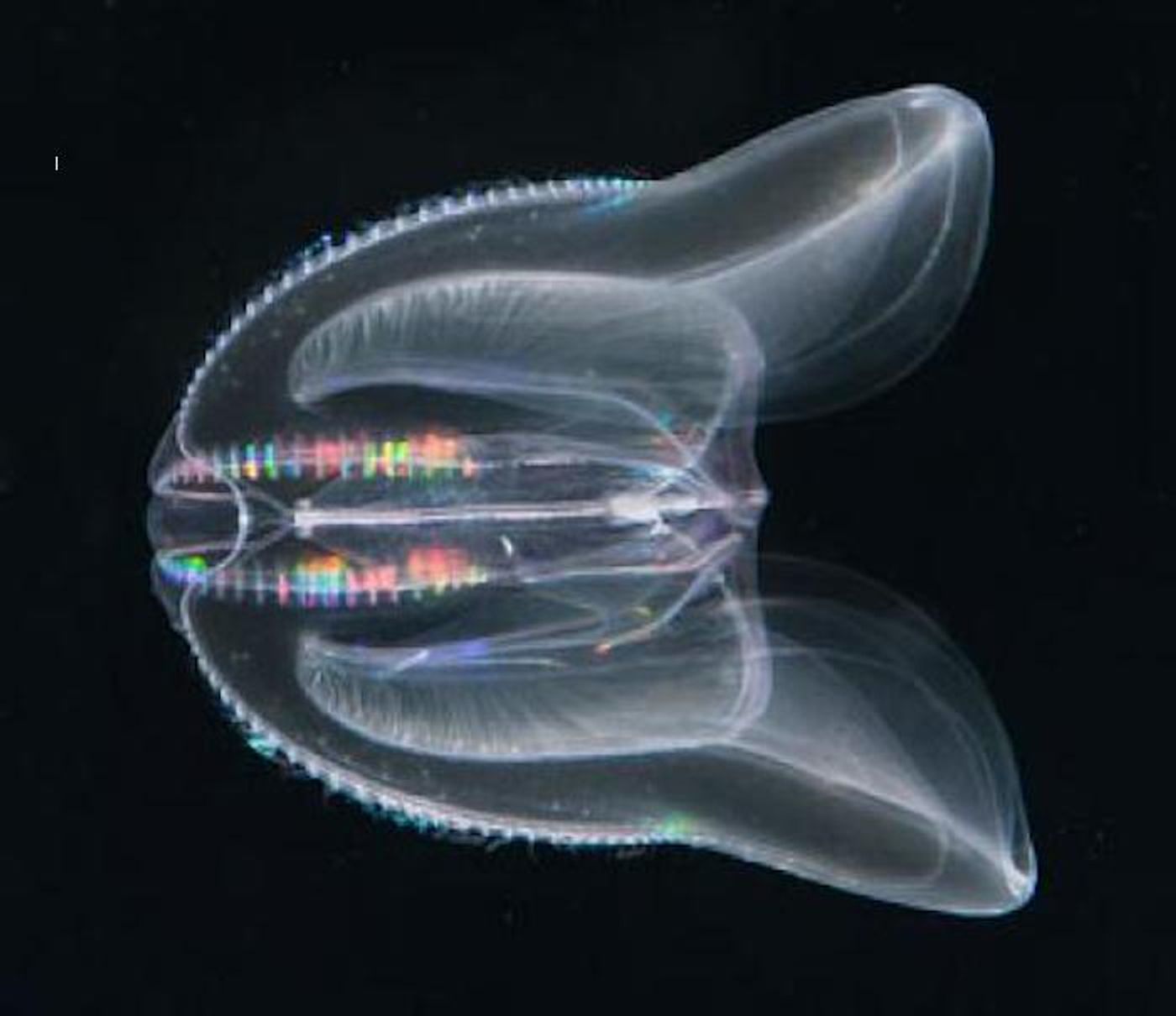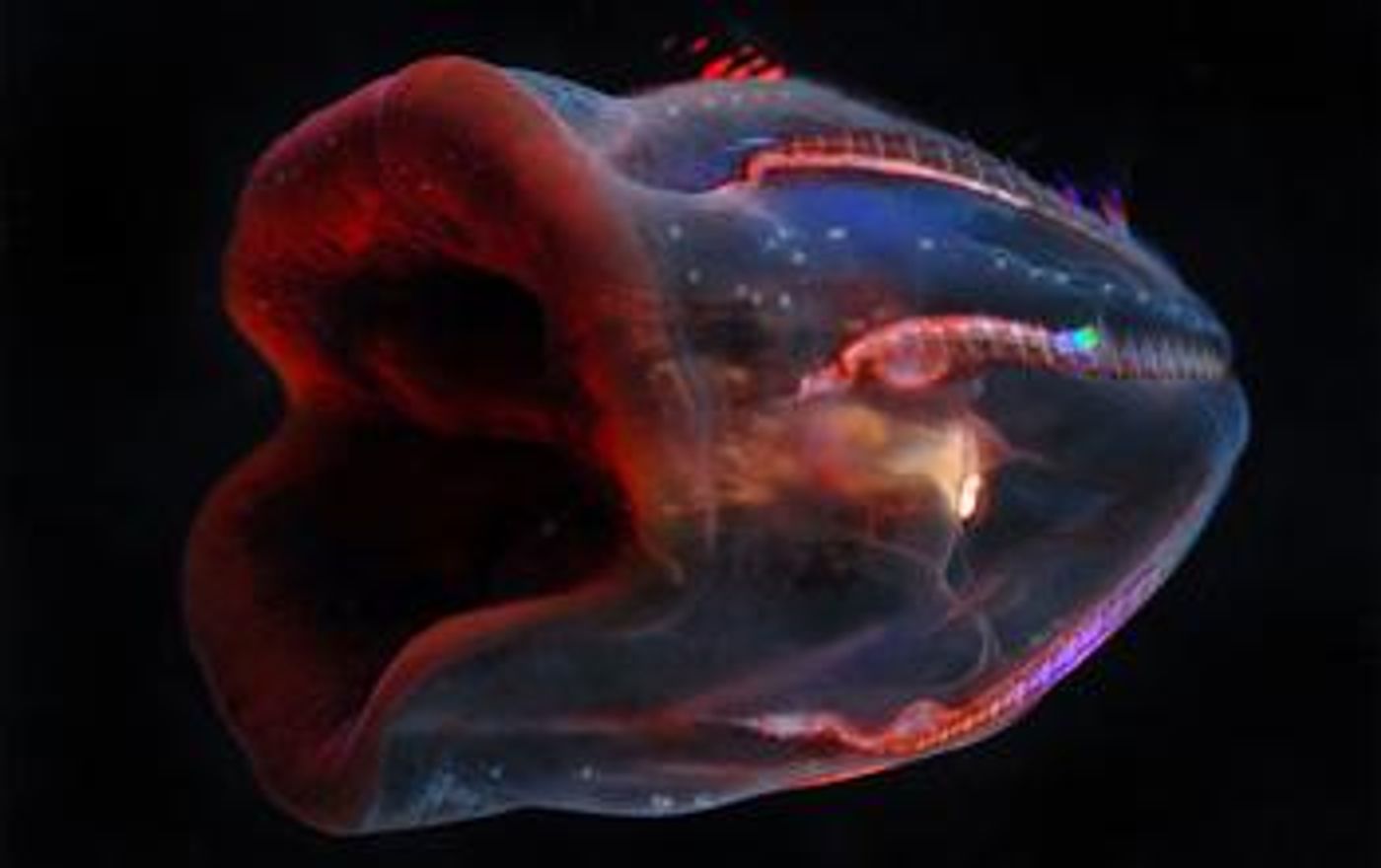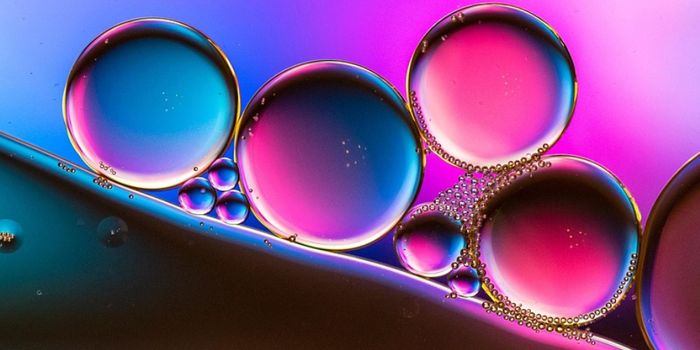New Comb Jelly Species Revealed by Genetic Study
Genetic research has now revealed more about comb jellies, also known as ctenophores, which are delicate and mysterious animals. While only about 200 comb jelly species have been described, they come in a huge array of colors, sizes, and shapes, and they're all important to the ecosystem of the oceans. Comb jellies can be found throughout the ocean, but they're extremely fragile, making them very challenging to study. Collections of the animals have been created by researchers at the Monterey Bay Aquarium Research Institute (MBARI), but many specimens are damaged or too delicate for preservation.
DNA has helped researchers overcome this difficulty. Scientists isolated some comb jelly DNA from old samples in the MBARI collection. The scientists created a library of different comb jelly genomic sequences. A specific sequence of DNA was also analyzed in multiple comb jellies, mitochondrial gene cytochrome-c-oxidase subunit I (COI). Different species of animals carry their own version of this gene. Special primers had to be painstakingly designed to amplify this region of comb jelly DNA by PCR, and the COI sequences from different comb jellies were analyzed.
When the researchers analyzed them, they discovered that some common comb jellies that have been grouped together are actually composed of different species. The work also added 72 species' genetic data to what's been catalogued, while there were previously only fifteen. Some comb jellies that were characterized have not even described before this. The researchers expect that the number of known comb jelly species might increase three or four times from the current 200.
This work shows how important good reference sequences are. The scientists compared their data to genetic data that was obtained from a sampling of the ocean environment. As marine researchers went from Monterey Bay, California to the Gulf of California in 2012, they collected DNA from the ocean environment along the way. This environmental DNA project yielded ctenophore DNA samples, but this latest study showed that at that time, it was often assigned to the wrong species. This study will improve reference sequences so scientists can learn more about comb jellies.
The scallop comb jelly (Bathocyroe sp.) is commonly seen off the central California coast. But this study showed that there are actually three different species living there. None of the COI sequences from these animals aligns with the three known species either. It may be that there the three species of comb jellies that live off the coast of California have never been described before this.
“Everywhere that we have been able to look in detail has revealed unseen diversity, suggesting there are even more species of ctenophores than our most optimistic estimates,” said MBARI researcher Steve Haddock.
Sources: Monterey Bay Aquarium Research Institute, Molecular Ecology Resources










